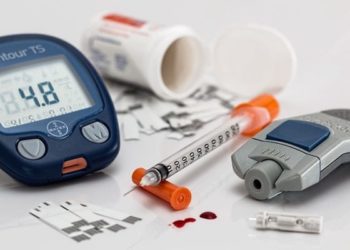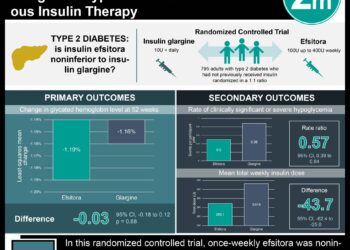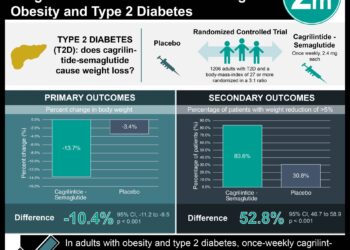Physical toll observed among high-striving black adolescents from low-income families
1. Although motivated, disadvantaged black teens fared better than their less-driven peers with regard to education, income, and depression, this population had a greater likelihood of developing type 2 diabetes.
2. In contrast, increased drive to succeed among black teens from more advantaged backgrounds was not associated with an elevated risk of developing type 2 diabetes.
Study Rundown: Of individuals living under the poverty line in the United States, ~25% of them are African Americans. Despite unfavorable circumstances, a subset of these disadvantaged youth successfully goes on to graduate from college, finds well-paying jobs, and avoids mental health challenges. Previous studies have suggested, however, that the resilience of this population is only “skin-deep,” noting that such academic, financial, and psychosocial success may come at a physical price. Researchers aimed to further investigate this potential phenomenon by exploring whether high-striving, disadvantaged black adolescents were more likely to develop a chronic disease, type 2 diabetes, when compared to their less-driven counterparts. Researchers analyzed 2 waves of responses from the United States Longitudinal Study of Adolescent and Adult Health (Add Health) in conjunction with measures of hemoglobin A1c (HbA1c) and body mass index (BMI). Results suggested that, indeed, a greater proportion of highly motivated black teenagers from disadvantaged backgrounds graduated from college, earned higher annual incomes, and had not been diagnosed with depression. However, this same group was more likely to be diagnosed with and/or have clinical signs of type 2 diabetes relative to less-educationally-driven, disadvantaged teens as well as when compared to more advantaged, highly driven teens. The association between high-striving personalities and type 2 diabetes was not noted in disadvantaged white adolescents, but it is possible that the study was underpowered to detect such an effect. Regardless, these data highlight the importance of carefully monitoring the physical health of highly motivated, disadvantaged youth and will hopefully prompt further investigation into the basis for the health consequences of this trait-circumstance combination.
Click to read the study, published today in Pediatrics
Relevant Reading: John Henryism and the health of African-Americans
Study Author, Gene H. Brody, PhD talks to 2 Minute Medicine: Center for Family Research, University of Georgia, Athens, Georgia.
“These results suggest that resilience may be a double-edged sword for Black Americans from disadvantaged backgrounds. The same characteristics associated with academic success and psychological adjustment may increase chances of developing type 2 diabetes and other chronic diseases of aging.”
In-Depth [survey]: The study sample consisted of respondents to Add Health between the ages of 15 and 17 years at wave 1 and 29 and 31 years at wave 4. This included 5366 black individuals and 3935 non-Hispanic white individuals. Socioeconomic status was assessed by 6 indicators, including family poverty and parental education; striving was gauged by 4 indicators, including educational aspirations and single-minded focus. Models were designed to assess the effects of disadvantage, striving, and race at wave 1 on psychosocial and health outcomes, specifically college degree, income, depression, and type 2 diabetes, at wave 4. Analysis of the full sample revealed a positive impact of striving on education, income, and mental health (p < 0.001). With regard to annual income, gender and race had the greatest impact (b = 17.338, p < 0.001 for being male, b = -6.516, p < 0.001 for being black). Additionally, disadvantaged whites fared worse than disadvantaged blacks when it came to obtaining a college degree (p < 0.001). BMI at wave 4 was a significant predictor of type 2 diabetes for the whole sample (p < 0.001) and separate analyses of blacks and whites (p < 0.01 and p < 0.001, respectively). Race was also a significant predictor of type 2 diabetes in the overall sample (p < 0.001). When blacks were modeled separately, the only other significant predictor was the interaction between disadvantage and striving (b = 0.117, p < 0.05). This interaction term was not significant in the model for whites.
Image: PD
©2016 2 Minute Medicine, Inc. All rights reserved. No works may be reproduced without expressed written consent from 2 Minute Medicine, Inc. Inquire about licensing here. No article should be construed as medical advice and is not intended as such by the authors or by 2 Minute Medicine, Inc.






![Engineered stem cells mitigate liver damage caused by radiation [PreClinical]](https://www.2minutemedicine.com/wp-content/uploads/2014/12/Human_embryonic_stem_cells-75x75.png)


